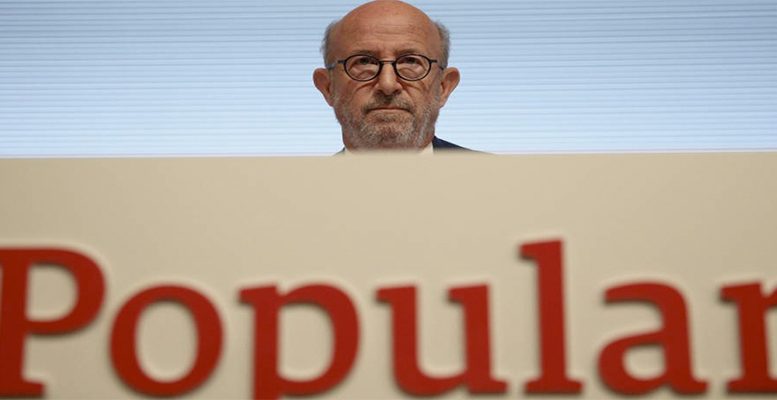For a few hours on June 7, Banco Popular had three owners: the previous shareholders, the FROB and Banco Santander; a quick trip, with a stop in between for a bit of a respite, before changing its skin. The Single Resolution Mechanism (SRM), in other words the ECB, decided on Tuesday that Popular was inviable and immediately started the liquidation process which begins with a bail-in.
Following this, there were two possible paths to take. Either the complex liquidation of the bank, which could have damaging consequences for the financial system and the global economy, or the arrival of a new administrator with enough capital to complete the restructuring of Popular, take over its ownership and and manage its transformation. This new owner would give a guarantee of continuity to depositors, debtors, suppliers and employees.
Over the last few months, various banks took the opportunity of analysing Popular, without any of them making a formal bid. But overnight on 6-7 June, Santander proposed the possibility of buying its smaller rival for a nominal 1 euro and commiting to a capital hike (for around 7 billion euros) to recover Popular’s solvency and liquidity. The deal took place immediately, so the ailing lender already has a new owner and manager this week; Santander, and a new five-member board, three of whom represent the acquiring bank and two independent members who have received the blessing of the regulator.
Thus continuity is guaranteed and Popular’s clients, suppliers and employees now belong to Santander. There is no state aid involved in the operation and there will now be a period in which frustrated investors, who have lost everything, will have to decide if it’s in their interests to protest and to whom: the previous management team? The SRM which intervened in Popular? The FROB which handled the intervention? The eventual buyer, Santander? But this is a story for further down the line.
Santander says the acquisition fits in with its strategic growth vision (Popular’s business is complementary in Spain and Portugal), while also providing an interesting financial fit for its shareholders. It expects to clock up a return on its initial investment of 13% in three years. But there are two basic arguments: firstly there is Santander’s experience and capacity for integrating and consolidating financial institutions; and, secondly, there is the convenience of being able to avoid the disruption of liquidating Popular.
The regulatory authorities have got rid of a problem and Santander is taking a reasonably well-calculated risk to achieve growth in addition to the organic growth included in its strategic plan. In other words, it is taking advantage of an opportunity with a risk which should be resolved over the next three years.
So now there are only three banks left out of the 10 domestic lenders which made up the old Spanish financial system: two giants, Santander and BBVA, and Sabadell. The peripheral banks have devoured the Madrid-based lenders.





